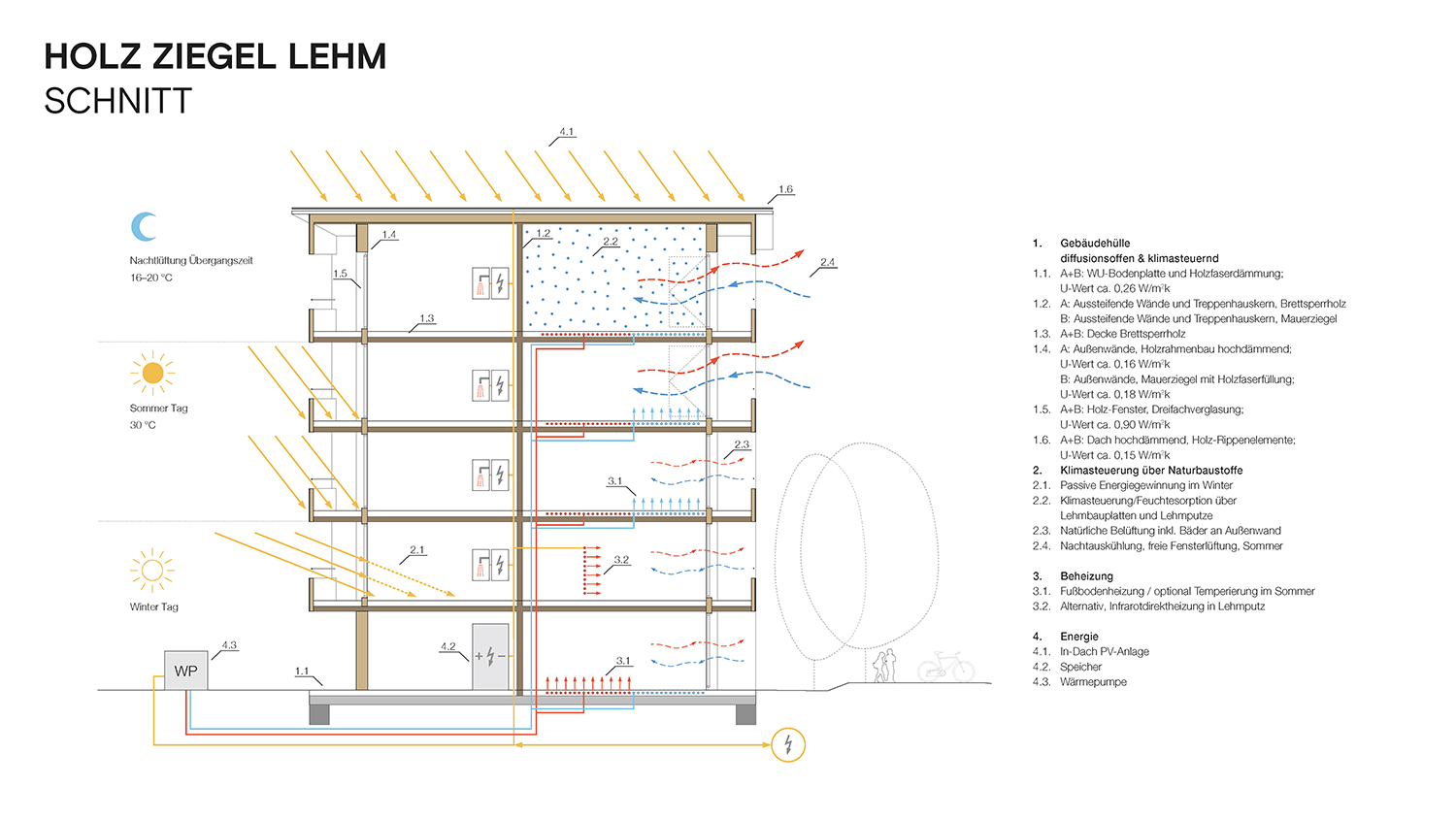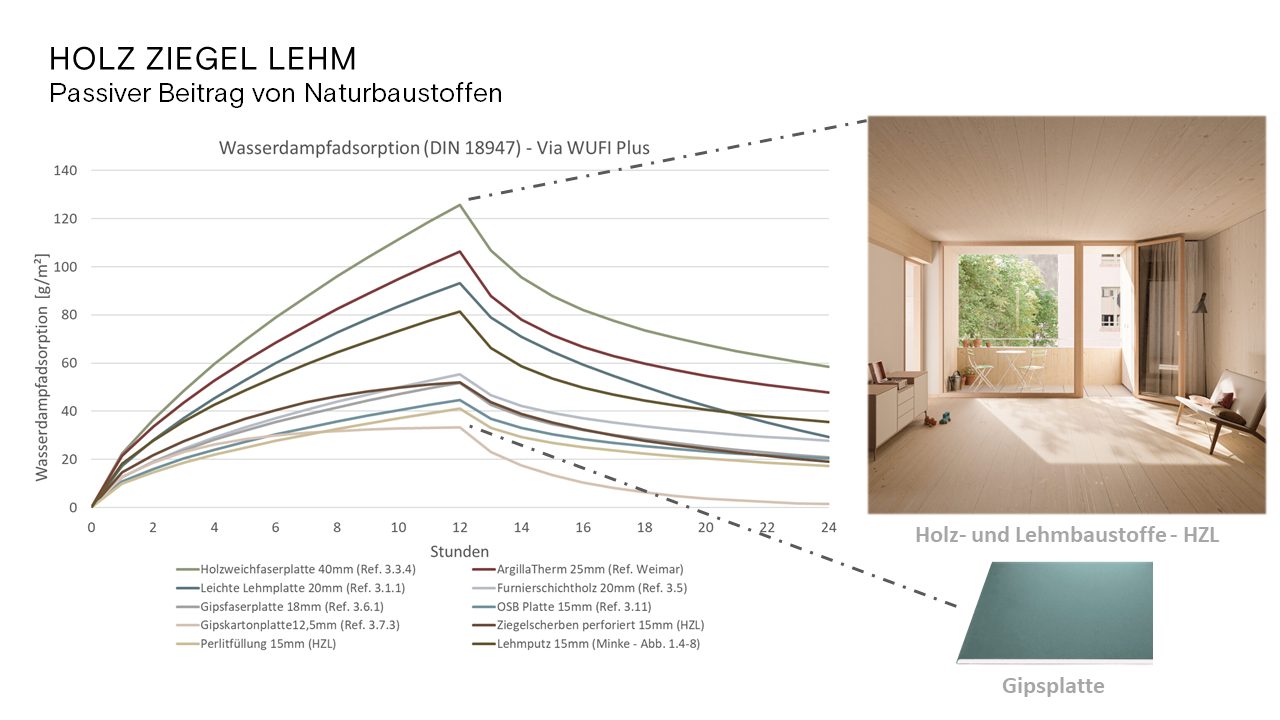Building rental housing—affordably and sustainably Prize for the Institute for Building Climatology and Energy of Architecture
How can robust, cycle-compatible and technology-reduced construction methods be implemented in the construction of rental housing? This is what Professor Elisabeth Endres’ Institute for Building Climatology and Energy of Architecture (IBEA) is investigating together with scientists from TU Berlin and the University of Stuttgart as well as two Berlin architectural firms. With their project “Gesundes Wohnen in Holz, Ziegel und Lehm” (Healthy Living in Wood, Brick and Clay), they recently impressed the jury of the Sustainability Challenge of the German Sustainable Building Council (DGNB) and won in the “Research” category.

Two new buildings, one in timber-frame and the second in brick-wood construction, are to demonstrate the potential of sustainable construction of public rental housing. Picture credits: © ARGE ZRS + BFM
Using the example of timber-frame and brick-wood buildings, the scientists are researching sustainable construction methods for affordable rental housing. With two new buildings in Berlin’s Alt-Britz district, the pilot project of the “Stadt und Land” housing association demonstrates the potential of sustainable construction. The researchers have identified various historically proven low-tech strategies, such as extremely reduced ventilation and building technology, and tested them in simulations. After the buildings have been erected, the research hypotheses on quality of stay, environmental impact, useful energy demand and living space will be tested by monitoring the ongoing operation of the buildings and additionally compared with a conventional construction method. The scientists would like to find out whether the robust, low-tech construction with reduced technology is also possible for affordable housing.

The researchers have identified various historically proven low-tech strategies, such as extremely reduced ventilation and building technology, and tested them in simulations. Picture credits: © ARGE ZRS + BFM
Good indoor climate through natural building materials
“The talents of the buildings in the research project lie in the passive contribution of the natural building materials, which enable the use of reduced system technology while at the same time increasing comfort,” Tobias Pörschke of the IBEA team summarises. The institute analyses the influence of the materials used on the indoor climate and checks the natural ventilation concept using dynamic simulations.
The wood and clay building materials used in the project have a higher moisture regulation capacity than conventional building materials. The advantages: The use of active equipment can be minimised and the health risks from excessively dry air or mould formation can be reduced. The goal is also to reduce the CO2 emissions that would result from the construction of conventional residential buildings by at least 50 percent.

The Institute for Building Climatology and Energy of Architecture analyses the influence of the materials used on the indoor climate. Picture credits: IBEA/TU Braunschweig
German Sustainable Building Council
The DGNB was founded in 2007 and has taken on a significant role in sustainable building in Germany. It has developed a holistic assessment system that takes environmental, social and economic criteria into account and sets a standard for the construction industry. The DGNB certification is an important tool for assessing sustainable buildings and provides guidance for builders, investors and users. The Sustainability Award presented by the DGNB recognises outstanding achievements and innovative projects in the field of sustainability and does not include prize money. The main purpose of the award is to increase the reach of innovative projects. The awards are presented in the categories Start-up, Innovation and Research.
